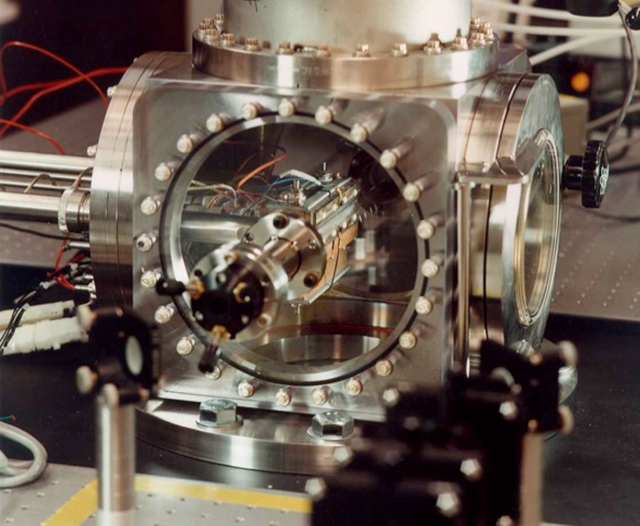This is a grain of interstellar dust. To get one of these, your best bet is to get into a spaceship for a couple of hundred years and get close enough to a red giant star, near its atmosphere. That’s where they’re formed and ejected into space. Or, like NASA, you can create a machine to make one from scratch — for the first time ever.
According to NASA, this a major milestone in interstellar astrophysics and planetary science. It will help us understand the types of grains that form around stars, which “will help us understand the formation of planets, including Earth-like planets.” This grains of dust “can drive the mass loss when a star is nearing the end of its life, play a part in the early stages of star formation, and form planets.”
Dust grains that form around dying stars and are ejected into the interstellar medium lead, after a life cycle spanning millions of years, to the formation of planets and are a key component of the universe’s evolution. Scientists have found the materials that make up the building blocks of the universe are much more complicated than originally anticipated.
The discovery will also help us interpret a lot of the data we get from telescopes all around the work.
The machine is called the Cosmic Simulation Chamber (COSmIC), an amazing box designed and built at NASA’s Ames Research Center in Moffett Field, California.
According to project leader and a space science researcher Farid Salama, “the harsh conditions of space are extremely difficult to reproduce in the laboratory, and have long hindered efforts to interpret and analyse observations from space. Using the COSmIC simulator we can now discover clues to questions about the composition and the evolution of the universe, both major objectives of NASA’s space research program.”
Before this project, it was almost impossible to study this kind of material. Whatever reaches Earth or the Solar System is too hard to identify, let alone catch. COSmIC allows “researchers to successfully simulate gas-phase environments similar to interstellar clouds, stellar envelopes or planetary atmospheres environments by expanding gases using a cold jet spray of argon gas seeded with hydrocarbons that cools down the molecules to temperatures representative of these environments.”
The resulting nanoparticles are 10 nanometres in size, with clusters of them getting up to 1.4 micrometres in diameter, which is “a tenth the width of a human hair”. The particles are analysed in this “custom-built time-of-flight mass spectrometer (TOFS), an ultra-sensitive device that detects the mass of matter at the molecular level:”

